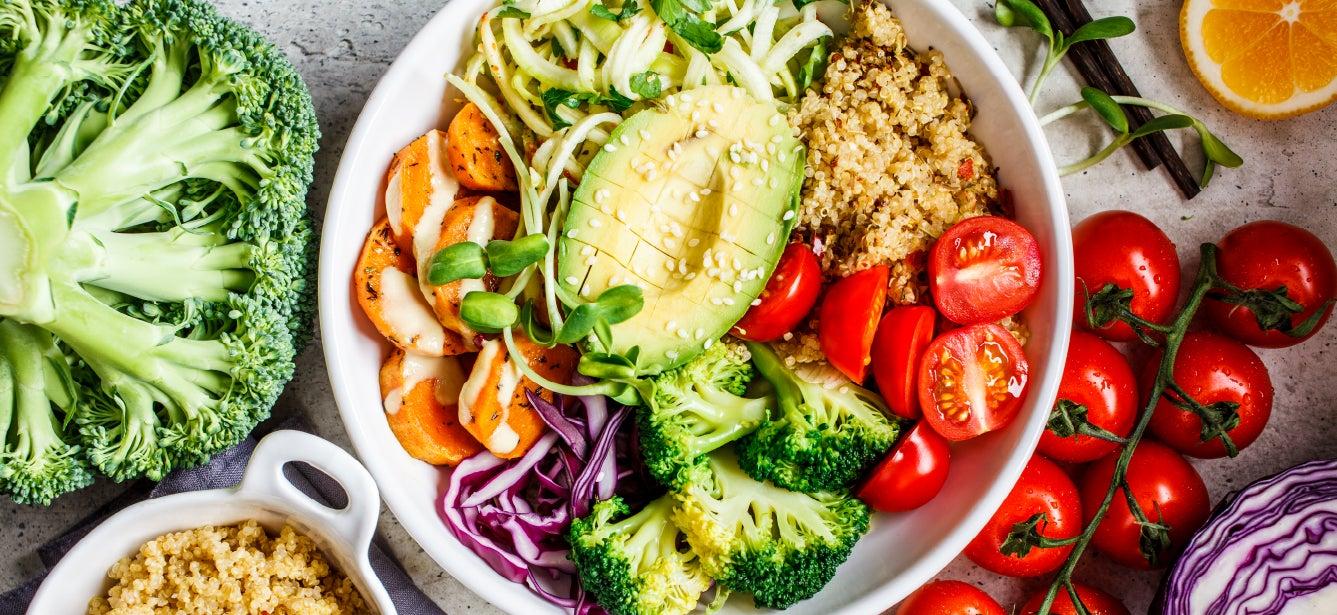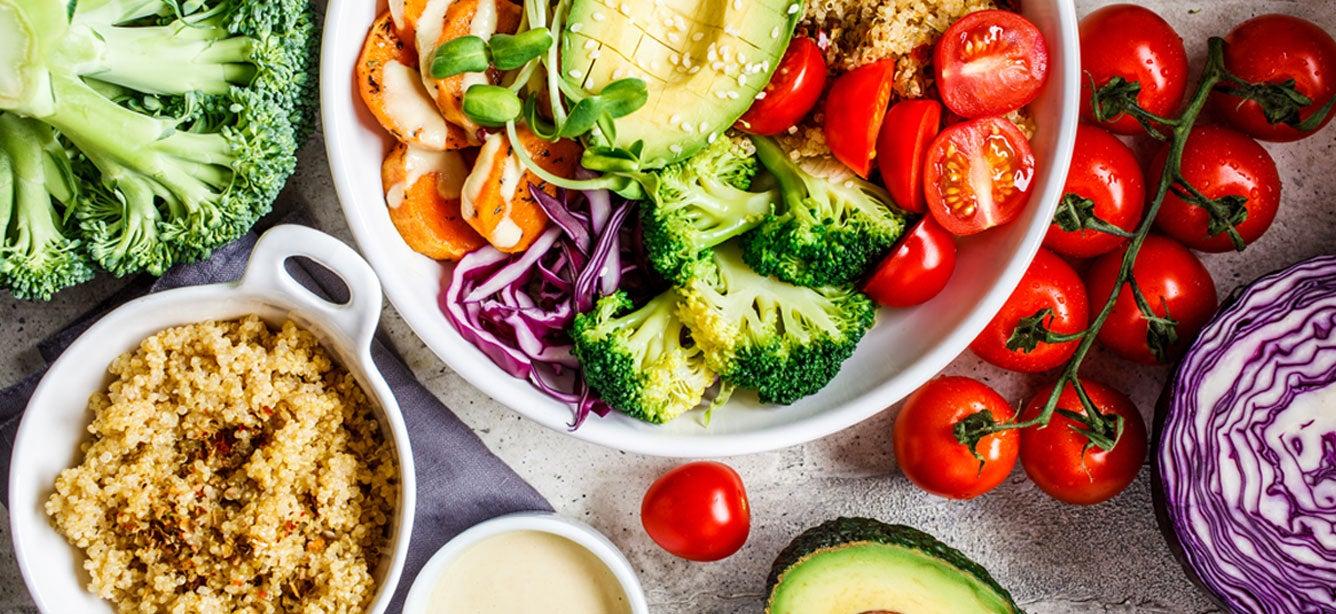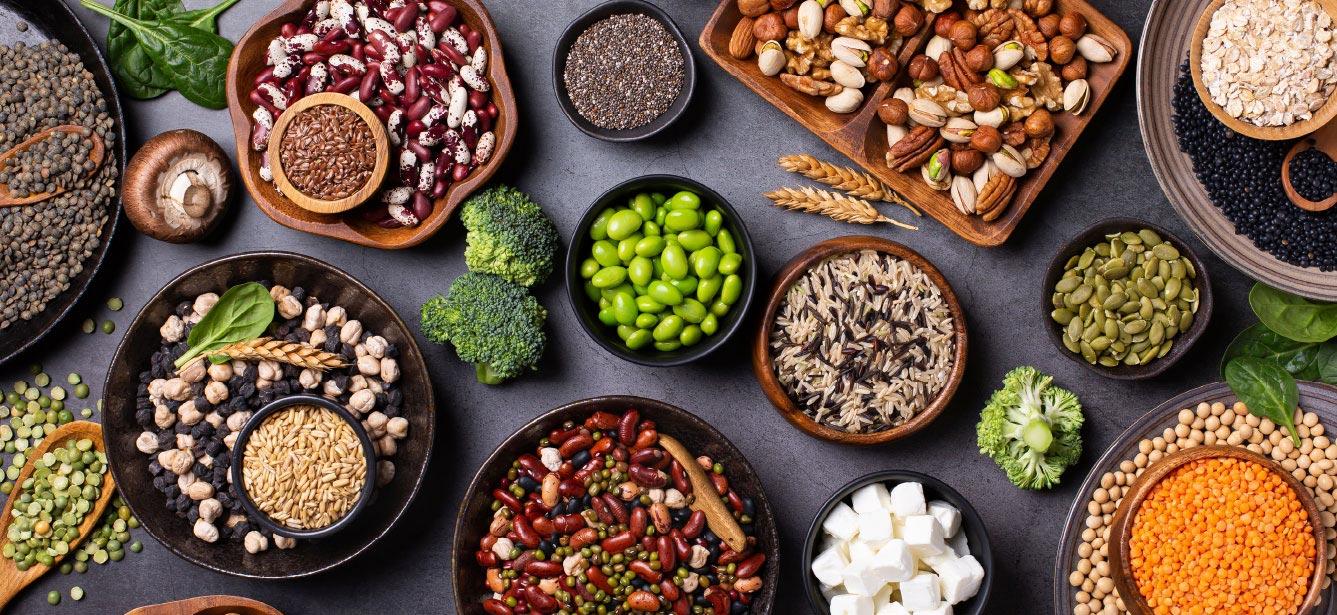Cooking Is a SNAP: Brighten Your Summer Plate with Healthy, Budget-Friendly Recipes
5 min read

Related Topics
When it comes to eating healthy, summer makes it simple.
From beets to bell peppers, carrots to corn, salad greens to zucchini squash—and so much in between—the fields and gardens are bursting with nutritious produce. And, because it’s all in season, everything you make with it tastes delicious without a lot of fuss.
“Nearly everyone appreciates the fresh flavors of summer,” said Dorothea Vafiadis, director of health partnerships and strategic engagements at NCOA. “This is great news, because there’s an abundance of ingredients at your fingertips right now to make good-for-you meals that don’t require hours in the kitchen.”
What a healthy plate looks like
Before you stack your barbecue skewers, though, it helps to know exactly which foods make up a balanced, healthy meal. Bertha Hurd, administrative nutritionist with the Los Angeles Department on Aging, advised dividing your plate into three sections.
Half of your plate should be fruits and vegetables, and they should be colorful," Bertha said.
Then, you should split the remaining half equally between proteins (like lean meat, fish, and beans) and whole grains (like wheat, oats, and brown rice), she said.
Ready to brighten your plate this summer with a fresh palette of produce and protein? Whether you’re heading to a birthday barbecue, a picnic in the park, or simply want to enjoy a light lunch at home, here are some recipes to inspire you, sourced from the Department of Agriculture’s (USDA’s) MyPlate.gov. Not sure what’s in season in your area? Check the USDA’s seasonal produce guide to search for your favorite foods—and discover some new ones, too.
How to keep food safe
One other thing to keep in mind: food spoilage can happen much more easily in the summer, when it’s easy to leave potluck dishes unattended while they slowly go bad in the heat. And, because older adults can be particularly susceptible to food-borne illnesses, says Vafiadis, it’s important to know how to properly prepare, handle, and store food. She advised, among other things:
- Always washing your hands
- Keeping raw meat separate from other foods
- Promptly refrigerating leftovers
- Checking expiration dates
Now that you know how to prioritize food safety, it’s time to try your hand in the summer kitchen.
Highlighted simple, summer recipes from USDA’s MyPlate
- Cucumber Salad with Tomato (Ingredients needed: Cucumber (diced); tomato (seeded and diced); onion (chopped); couscous or rice (cooked); dill (chopped fresh or dried); Low-fat Italian salad dressing)
- Melon and Mint (Ingredients needed: Lime juice; mint leaves (fresh, chopped); watermelon (seeded, chopped); honeydew melon or cantaloupe (seeded, chopped); brown sugar (packed) or crumbled feta cheese)
- Pink Party Salad (Ingredients needed: Potatoes (washed and cut); beets (cooked); green peas (fresh or frozen); eggs (hard boiled); apple (unpeeled); lemon juice; olive oil; vinegar; sugar
- Ratatouille (Ingredients needed: Onion (sliced); garlic (minced); bell peppers (any color); eggplant (peeled and cut); diced tomatoes (canned, undrained); basil (chopped fresh or dried); black pepper; parsley (chopped fresh); canola oil; chicken or tofu is optional)
- Simple Stuffed Peppers (Ingredients needed: Bell peppers (any color); brown rice (uncooked); black beans (canned, unsalted); Cheddar cheese (shredded, reduced fat); tomato (sliced); salsa; salt for taste is optional)
- Summer Squash Medley (Ingredients needed: Onion (diced); olive or canola oil; yellow summer squash (sliced); zucchini (sliced); diced tomatoes (canned); garlic powder; salt and pepper (optional, to taste); Parmesan cheese (grated); whole grain pasta or brown rice is optional to complete the meal)
- Watermelon Gazpacho (Ingredients needed: Watermelon (seeded, cubed); cucumber (peeled, chopped); garlic (minced); onion (chopped); lime juice; olive oil; basil (fresh, chopped); black pepper; seeded jalapeno pepper (chopped) is optional)
- Zesty Orange Carrots (Ingredients needed: Carrots (peeled); orange (half); ground cinnamon; honey; butter (or butter alternative); fresh parsley is optional)
Using SNAP benefits to help you afford healthy meals
If you live on a limited monthly income, and aren’t sure you can afford what you need to make these recipes, you might consider applying for the Supplemental Nutrition Assistance Program, or SNAP—just like Mary and Tom both did.
Mary, 63, relies on SNAP to help afford her groceries each month. During the growing season, she buys fresh fruits and vegetables from a local farmers’ market using her SNAP benefits (EBT) card.
“I am thrilled by this opportunity,” Mary told her benefits counselor at a local Benefits Enrollment Center.
So is Tom, 60, who uses his own SNAP benefits to buy the healthy produce he wants to eat directly from farmers he knows. “I even got some amazing Colorado-grown Rocky Ford cantaloupe!” he enthused.
More ways to afford summer produce
In addition to SNAP, there are several other food assistance programs available to help you buy some of summer’s best ingredients.
- Special SNAP incentive programs: If you’re already enrolled in SNAP, you might be able to double your benefits dollars through a special Match Incentive Program at your local farmers’ market. Not every market offers this program, though, so be sure to check with yours before you shop.
- Senior Farmers’ Market Nutrition Program (SFMNP): The SFMNP provides farmers’ market vouchers for income-eligible seniors, who can use them to obtain fresh food from local farms, roadside stands, and community-supported agriculture (CSA) programs at no cost.
You can also enter your ZIP code at NCOA’s BenefitsCheckup.org to find out what benefits may be available in your area. You can even use the online tool to see whether you qualify for SNAP and how to get help to apply.




